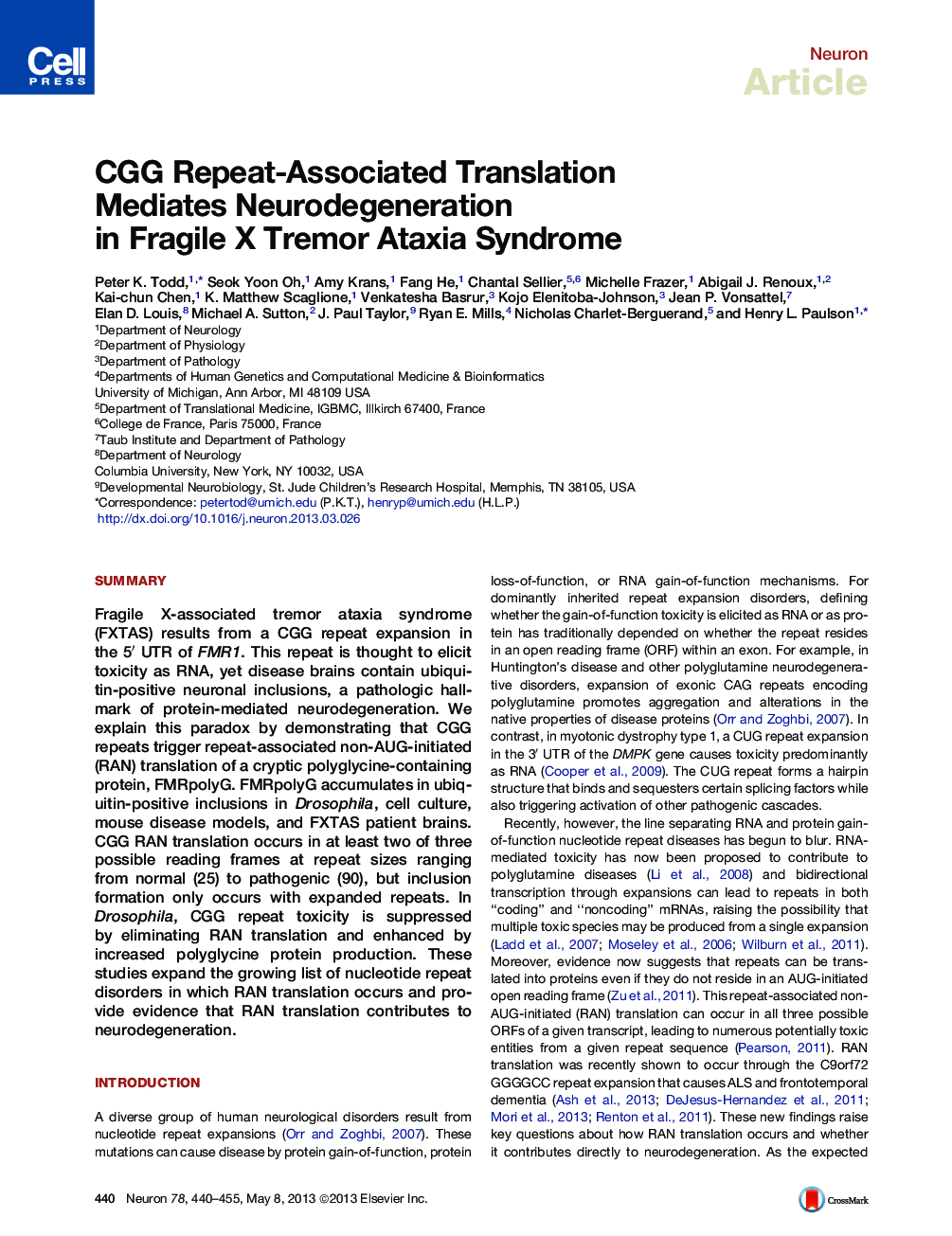| کد مقاله | کد نشریه | سال انتشار | مقاله انگلیسی | نسخه تمام متن |
|---|---|---|---|---|
| 4321318 | 1291598 | 2013 | 16 صفحه PDF | دانلود رایگان |

• CGG repeats in the 5′ UTR of FMR1 elicit AUG-independent (RAN) translation
• This produces an aggregation-prone polyglycine protein found in patients
• CGG RAN translation explains pathologic differences in FXTAS mice
• CGG RAN translation is critical for CGG repeat toxicity in fly disease models
SummaryFragile X-associated tremor ataxia syndrome (FXTAS) results from a CGG repeat expansion in the 5′ UTR of FMR1. This repeat is thought to elicit toxicity as RNA, yet disease brains contain ubiquitin-positive neuronal inclusions, a pathologic hallmark of protein-mediated neurodegeneration. We explain this paradox by demonstrating that CGG repeats trigger repeat-associated non-AUG-initiated (RAN) translation of a cryptic polyglycine-containing protein, FMRpolyG. FMRpolyG accumulates in ubiquitin-positive inclusions in Drosophila, cell culture, mouse disease models, and FXTAS patient brains. CGG RAN translation occurs in at least two of three possible reading frames at repeat sizes ranging from normal (25) to pathogenic (90), but inclusion formation only occurs with expanded repeats. In Drosophila, CGG repeat toxicity is suppressed by eliminating RAN translation and enhanced by increased polyglycine protein production. These studies expand the growing list of nucleotide repeat disorders in which RAN translation occurs and provide evidence that RAN translation contributes to neurodegeneration.
Journal: - Volume 78, Issue 3, 8 May 2013, Pages 440–455